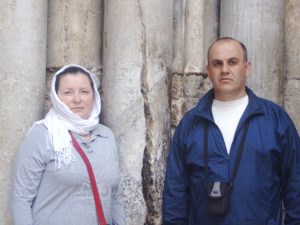The True Year of Our Lord: A Glance at the Anno Domini System

The Anno Domini (A.D.) dating system, widely used in the Western world to denote the years following the birth of Jesus Christ, has been a cornerstone of historical chronology for centuries. However, intriguing evidence and scholarly analysis suggest that this dating system might not be as accurate as we once thought. This blog post explores the claims made by St. Nicodemus the Athonite and other Orthodox scholars regarding the inaccuracies of the Anno Domini system, highlighting the implications for historical understanding.
The Origins of Anno Domini
The Anno Domini system was devised in the 6th century by Dionysius Exiguus, a Scythian monk who aimed to establish a new calendar system that would replace the Roman calendar. Dionysius’ goal was to create a Christian timeline that began with the incarnation of Christ, which he placed as the year 1 A.D. However, scholarship suggests that Dionysius’ calculations may have been flawed, leading to an incorrect starting point for the Christian era.
St. Nicodemus the Athonite’s Perspective
St. Nicodemus the Athonite, an influential 18th-century Orthodox saint and theologian, is among those who have questioned the accuracy of Dionysius’ calculations. According to St. Nicodemus, historical records and scriptural evidence point to discrepancies in the Anno Domini dating system. He argued that the actual birth of Christ occurred several years earlier than 1 A.D., a conclusion supported by various historical and astronomical data.
St. Nicodemus wasn’t alone in his critique. Theologians and historians have noted that the Gospels of Matthew and Luke provide clues that, when cross-referenced with known historical events, suggest our Lord Jesus Christ was born in the flesh around 4-6 B.C. This period aligns with the reign of King Herod the Great, who, according to the Gospel of Matthew, was alive at the time of Jesus’ birth but died shortly afterward in 4 B.C.
Historical and Astronomical Evidence
One of the key pieces of evidence supporting a birthdate earlier than 1 A.D. is the astronomical event known as the Star of Bethlehem. Some scholars believe this observed star was a significant astronomical conjunction, such as the conjunction of Jupiter and Saturn, which occurred in 7 B.C. Others suggest it might have been a comet or a supernova. Regardless of its exact nature, the timing of these recorded astronomical events aligns more closely with the earlier birthdate proposed by St. Nicodemus and others.
Additionally, there is compelling evidence from natural phenomena that coincide with the suggested timeline. Historical records indicate that an earthquake occurred around the time of Herod the Great’s death. This earthquake is significant because it helps to establish a more precise chronology of events during this period. The Jewish historian Flavius Josephus mentions an earthquake that caused widespread destruction in Judea, aligning with the later years of Herod’s reign. This natural event serves as another marker that supports the earlier dating of Christ’s birth around 4-6 B.C.
Furthermore, historical records from the time of King Herod, as well as the administrative records of the Roman Empire, provide additional support for a birthdate around 4-6 B.C. These records mention the census of Quirinius, described in the Gospel of Luke, which likely took place around this time, further corroborating the earlier date.
This exploration invites us to appreciate the wisdom of our Orthodox forebears like St. Nicodemus the Athonite, who critically examined accepted norms and sought a more precise understanding of our faith’s history. Their work exemplifies the Orthodox commitment to both faith and reason, encouraging us to continue seeking truth in all its forms.
The possibility that the Anno Domini system is not entirely accurate opens the door for a richer, more nuanced understanding of our historical timeline. By revisiting the work of scholars like St. Nicodemus the Athonite and others, we gain valuable insights into the early years of Christianity and reaffirm our dedication to historical truth. While the exact year of Christ’s birth may remain a topic of debate, what remains clear is the enduring significance of His incarnation and the impact it has had on history.
As Orthodox Christians, we are called to pursue truth in all its dimensions—historical, theological, and spiritual. In doing so, we honor the legacy of those who came before us and contribute to a deeper, more accurate understanding of our faith.
For more insights and discussions on Orthodox Christianity and historical theology, be sure to explore other articles on trueorthodox.eu. Let us continue to seek the truth together, guided by the wisdom of the saints and the teachings of the Church.







